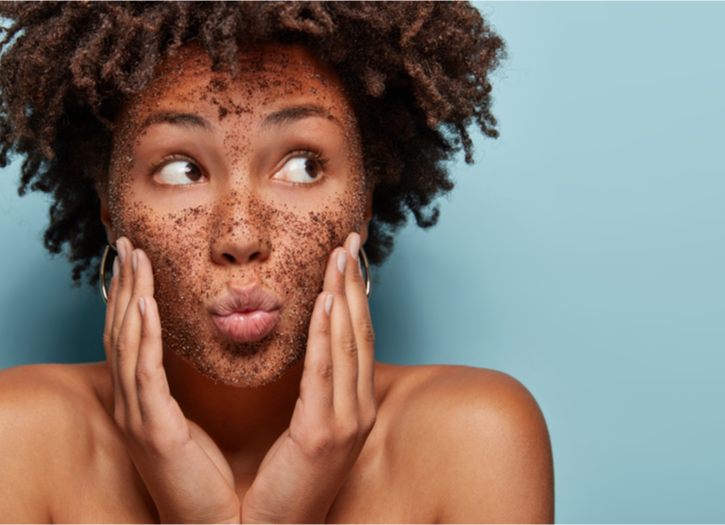Exfoliation involves the removal of the oldest dead skin cells from the skin’s surface. The word comes from the Latin word exfoliare (to strip off leaves). Exfoliation is involved in all facials and can be achieved by mechanical or chemical means, such as microdermabrasion or chemical peels.
Mechanical processes involve physically scrubbing the skin with an abrasive material. Mechanical exfoliants include microfiber cloths, adhesive exfoliation sheets, micro-bead facial scrubs, crêpe paper, crushed apricot kernel or almond shells, sugar or salt crystals, pumice, and abrasive materials such as sponges, loofahs, brushes, and fingernails.
Aside from microdermabrasion, derma-planing is a mechanical method of exfoliation that exfoliates the skin (or epidermis) by removing dead skin and vellus hair. The procedure is performed by an aesthetician, who gently glides a scalpel across the skin to remove the outermost layer of skin cells and hair from the face. It also shaves off the vellus hair as a by-product, but the hair grows back at the same rate and texture as before. The procedure involves using a 25 cm (10 in) scalpel, which curves into a sharp point. In most cases, the blade is used on clean, dry skin on the forehead, cheeks, chin, nose, and neck.
Chemical exfoliants include scrubs containing salicylic acid, glycolic acid, fruit enzymes, citric acid, or malic acid, which may be applied in high concentrations by a medical professional or in lower concentrations in over-the-counter products. Chemical exfoliation may involve the use of products that contain alpha-hydroxy acids (AHAs, like glycolic acid, lactic acid, mandelic acid, malic acid, tartaric acid, and citric acid), beta hydroxy acids (BHAs, typically salicylic acid), polyhydroxy acids (PHAs, like lactobionic acid, gluconolactone, and galactose) or enzymes (such as trypsin or collagenase) that weakens cell adhesion, allowing them to ease away. This type of exfoliation is recommended for people treating acne. Some methods of hair removal also exfoliate the skin.
Waxing is a mechanical process to pluck the hair out of the skin, but it also functions as a mechanical exfoliant. It can be done every two to eight weeks. It is not carried out as frequently as many exfoliants. Thus, it does not fully substitute for an exfoliation regimen.
Chemical depilatory containing calcium hydroxide and/or thioglycolic acid, such as Nair, and shaving powder, are examples of a chemical hair removal product that also functions as a chemical exfoliant. They are applied more frequently than waxing (once a week rather than once a month) since they only partially destroy the hair below the skin, rather than pulling up the entire root as waxing does.
Wet shaving also has mechanical exfoliating properties. Moving a shaving brush vigorously across the face washes the face and removes dead skin at the same time. After applying the lather with a brush, the use of a razor removes dead skin because the razor is dragged closely across the skin and exfoliates more effectively than an electric razor.







Add Comment
You must be logged in to post a comment.